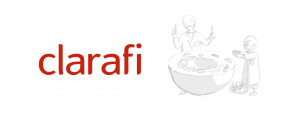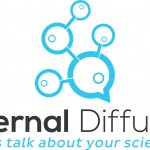How platforms like Clarafi can drastically improve your scientific visualization skills
Clarafi is a community of scientists, graphics professionals, students and educators interested in scientific visualization. Their scope is everything from advanced uses of visualization in science to visual literacy in the K-12 space.
A range of scientific visualization tools have become available in the last decade. Unfortunately, these programs can be quite complex to work with and courses hard to find. To address those problem, Clarafi was formed. Pieter Torrez from Crastina and Scigrades had a talk with the creator of Clarafi: Gaël McGill, CEO of Digizyme (www.digizyme.com) and Faculty & Director of Molecular Visualization at Harvard Medical School (USA).
- Hi Gaël, can you describe Clarafi?
Clarafi (www.clarafi.com) is a community of scientists, artists, teachers and students who share a passion for scientific visualization. At the intersection of the rapid pace of software development and the ever-changing landscape of scientific discovery, Clarafi offers training, tools and resources that help members improve their skills and tackle the unique design and technical challenges of science communication. In a sense Clarafi is a continuation of the site I created in 2006 – www.molecularmovies.com, but the goal is to expand the scope of training, tools, and resources for a wider audience.
2. Why is it important for (young) scientists?
I think that scientific communication is critical to being a successful scientist. Visual communication, in particular, is a powerful medium to engage your audiences (whether they be colleague scientists, students or the general public). As a research tool, visualization also offers unique benefits for analyzing complex processes, structures and, in general, large datasets. The tools that enable the communication and research aspects of visualization are beginning to intersect, so it’s an exciting time to capture their potential, and Clarafi hopes to provide such resources and training.
3. How will Clarafi contribute to a better outreach of scientific research?
As noted above, Clarafi will contribute mainly by offering a solid training ground for scientists interested in visual communication for their research. Clarafi’s courses will also be uniquely focused on different audience types. For example we are developing training not only for advanced uses of visualization in science, but also have a number of courses in production that specifically address the need for better visual literacy in the K-12 space. A number of S.T.E.A.M. ‘kits’ are in production that provide not only classroom instructional materials in specific areas of science (cell/molecular biology, coral reefs, biomimicry and others) but also support teachers with professional development resources (i.e. strategies for how to deploy digital technologies and visualization in the classroom). Our own work at Digizyme (the company and team behind the Clarafi portal) has spanned many different project types and audiences including science museums, academic/medical/research institutions, biotechnology and pharmaceutical, K-12 and higher education institutions and others). So we are bringing some of that experience in developing scientific visualization materials for these settings to the training at Clarafi.
4. What does Clarafi offer for the moment?
At the moment Clarafi offers a combination of resources including 1) training materials (video tutorials in various aspects of scientific and data visualization and communication), 2) tools (like our Molecular Maya software with an expanding set of toolkits automating import and animation of accurate molecular structures from the Protein Data Bank (PDB)), 3) resources that enable scientists to find key datasets and other information when creating a visualization and 4) career resources for those interested in entering the field (i.e. both a curated compilation of articles about those working in the field, as well as a series of Clarafi-commissioned profiles to share the various experiences and career paths that people have taken).
5. What are the future plans for Clarafi?
So far, although the site has been enthusiastically received, it is still in its infancy. There is much more to come!… including an expansion of the scope of tutorial topics available (see above). At the moment our offerings are mostly in the area of 3D animation/simulation in the Life Sciences, digital publishing technologies (iBooks Author, HTML5), some of the common 2D graphics tools (Photoshop and Illustrator) and design principles underlying graphic preparation in the sciences. We will not only further strengthen these offerings into a full curriculum (a certificate program for scientific visualization), but also want to expand our training into the realm of information and data visualization frameworks and languages (D3, Processing among others). I think the combination of novel, intuitive software tools paired with high-quality, professionally-relevant training is powerful mix and our goal is to continue developing software that lowers the typical learning curve associated with high-end visualisation (i.e. Molecular Maya and its associated kits).The portal will also be the home of several other certificate programs that support design and visualization training for scientists as well as professional training for teachers interested in visual literacy for the K-12 science classroom.
- Break it Down: Refreshing Science Communication - February 8, 2017
- How to create clear and attractive graphs/illustrations? - September 5, 2016
- How platforms like External Diffusion can highly improve the outreach of your research paper - April 18, 2016
- How platforms like Clarafi can drastically improve your scientific visualization skills - April 6, 2016
- How social platforms like AcademicLabs can make it easier to find the right research partners and aim high - March 23, 2016
- How science communication agencies like Mediomix can enlarge the outreach of your research - February 29, 2016
- How Life Science Network can create networking opportunities for scientists - January 27, 2016
- German design team creates “Next Generation Scientific Poster” - December 13, 2015







Leave a Reply
Want to join the discussion?Feel free to contribute!